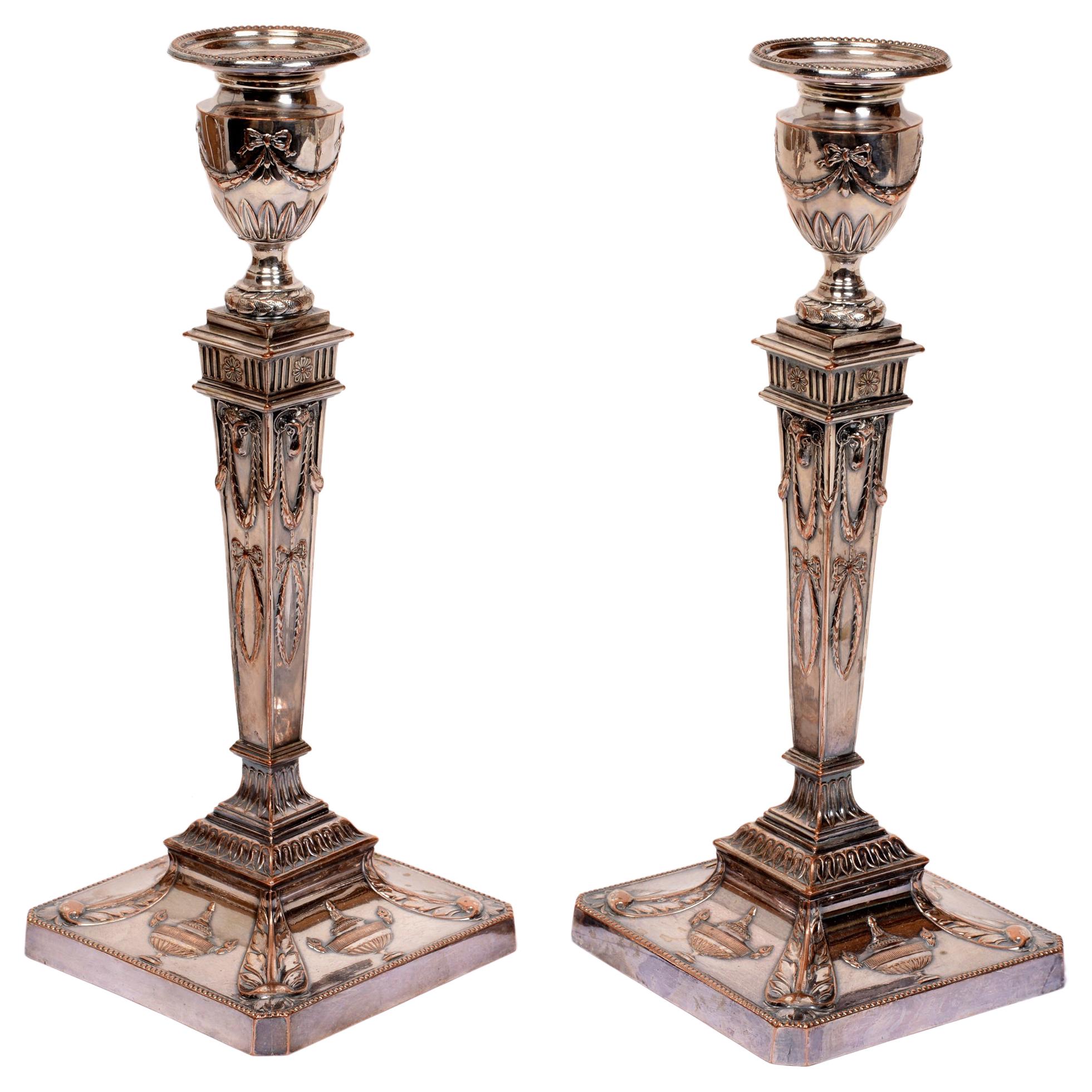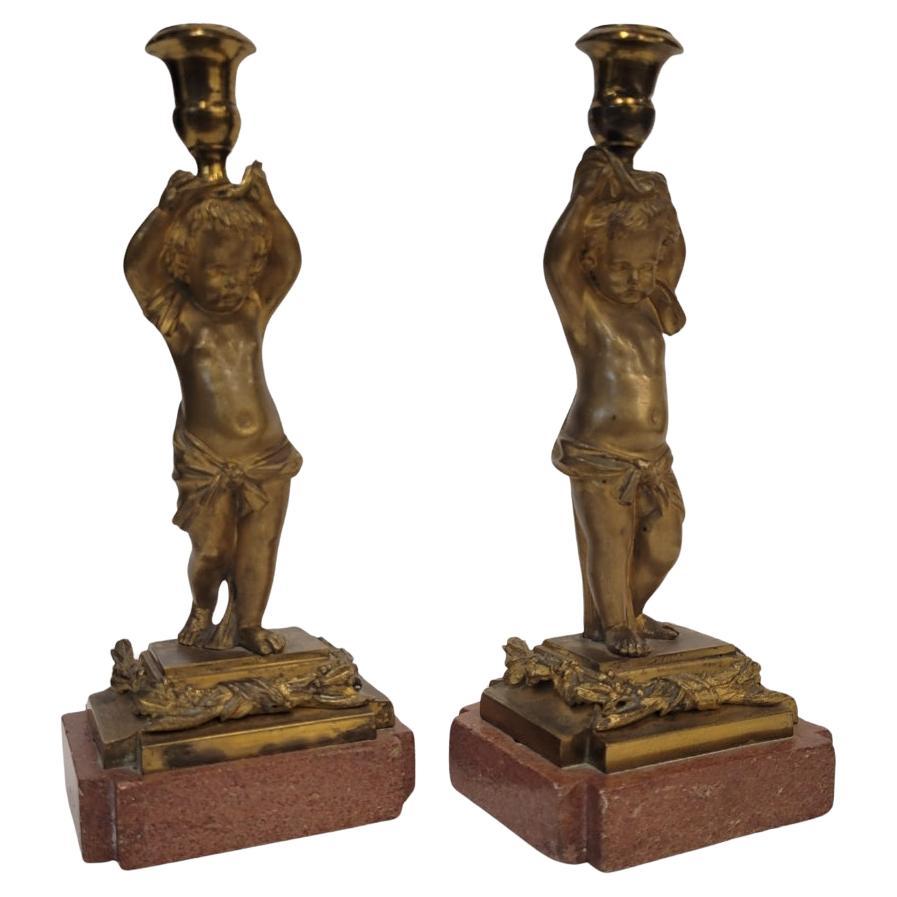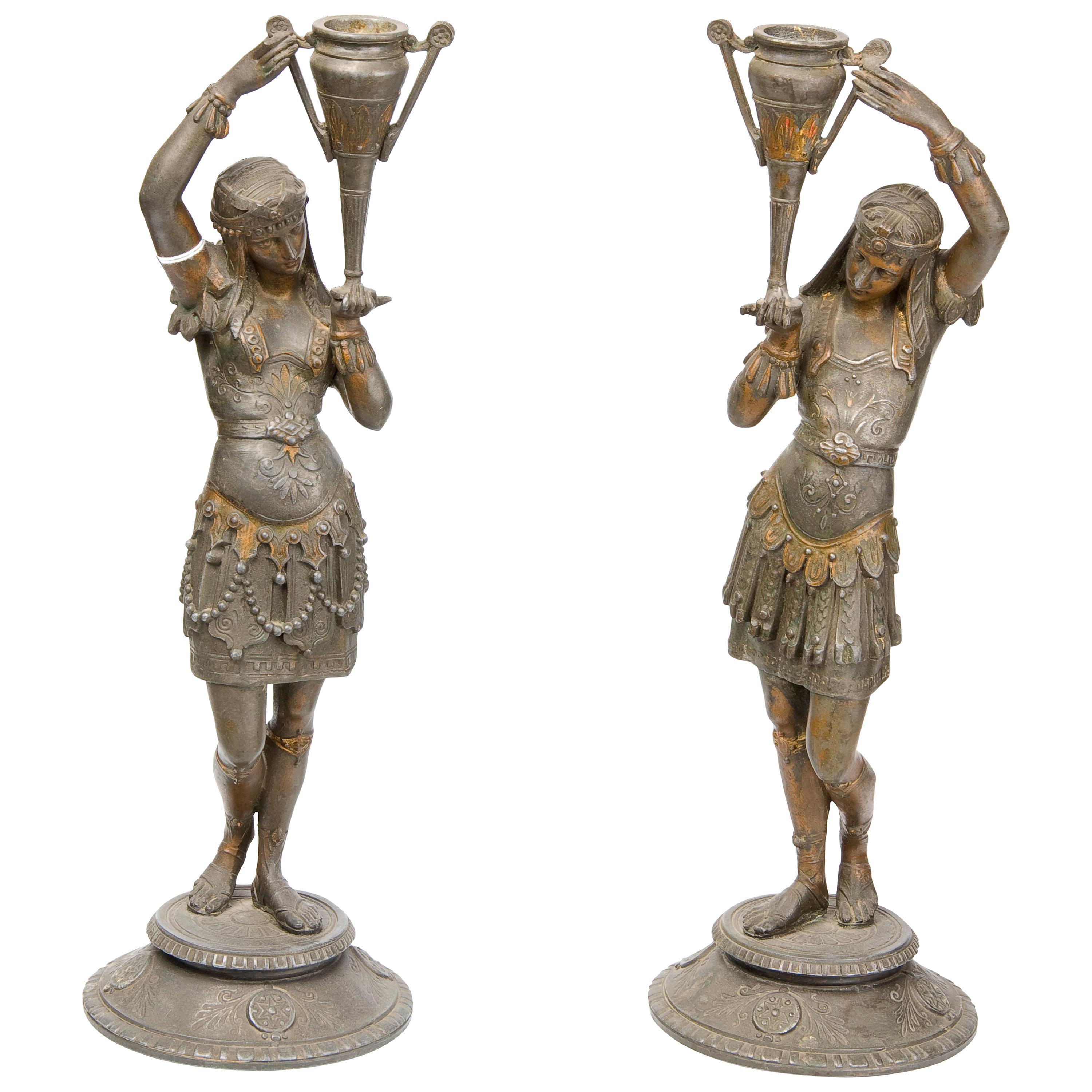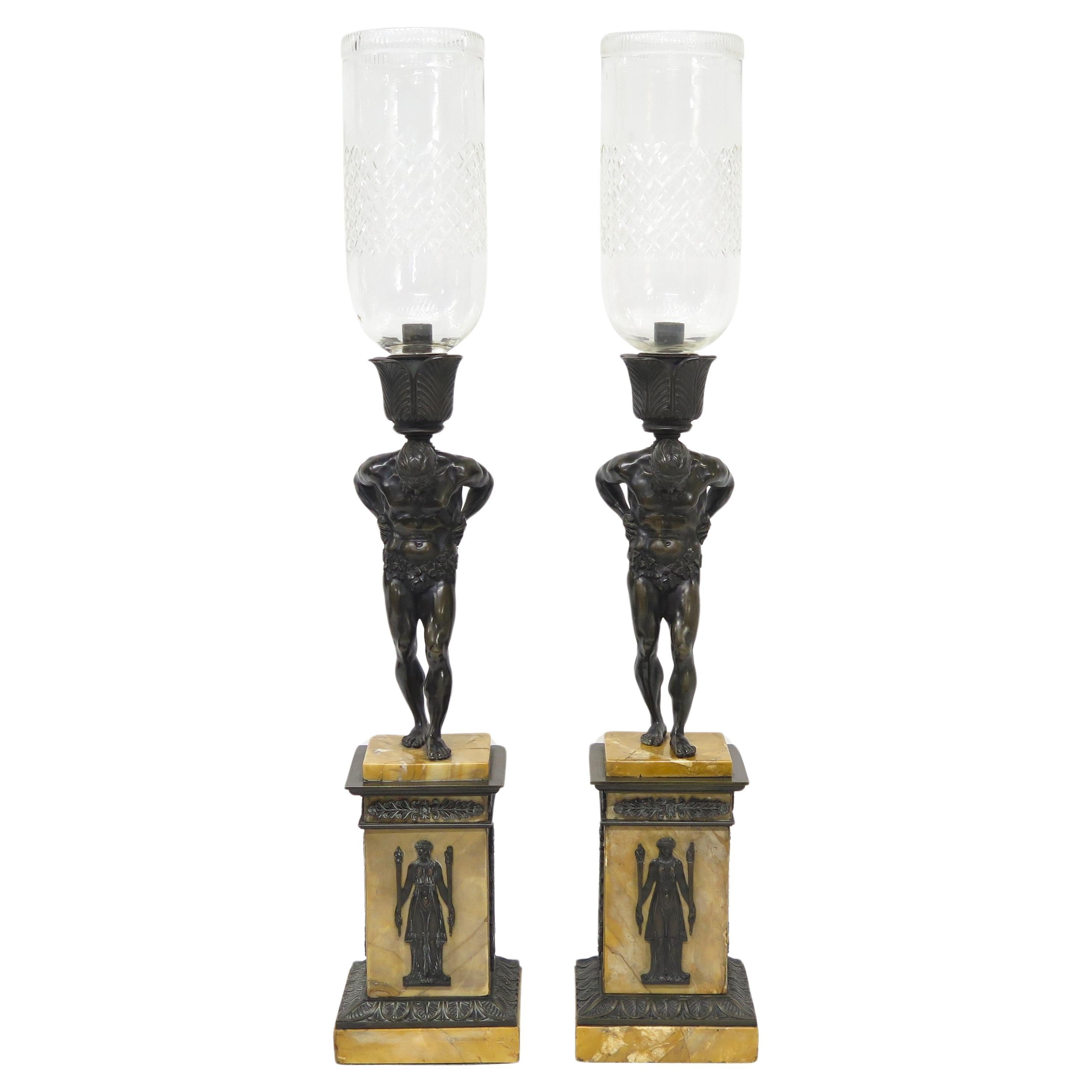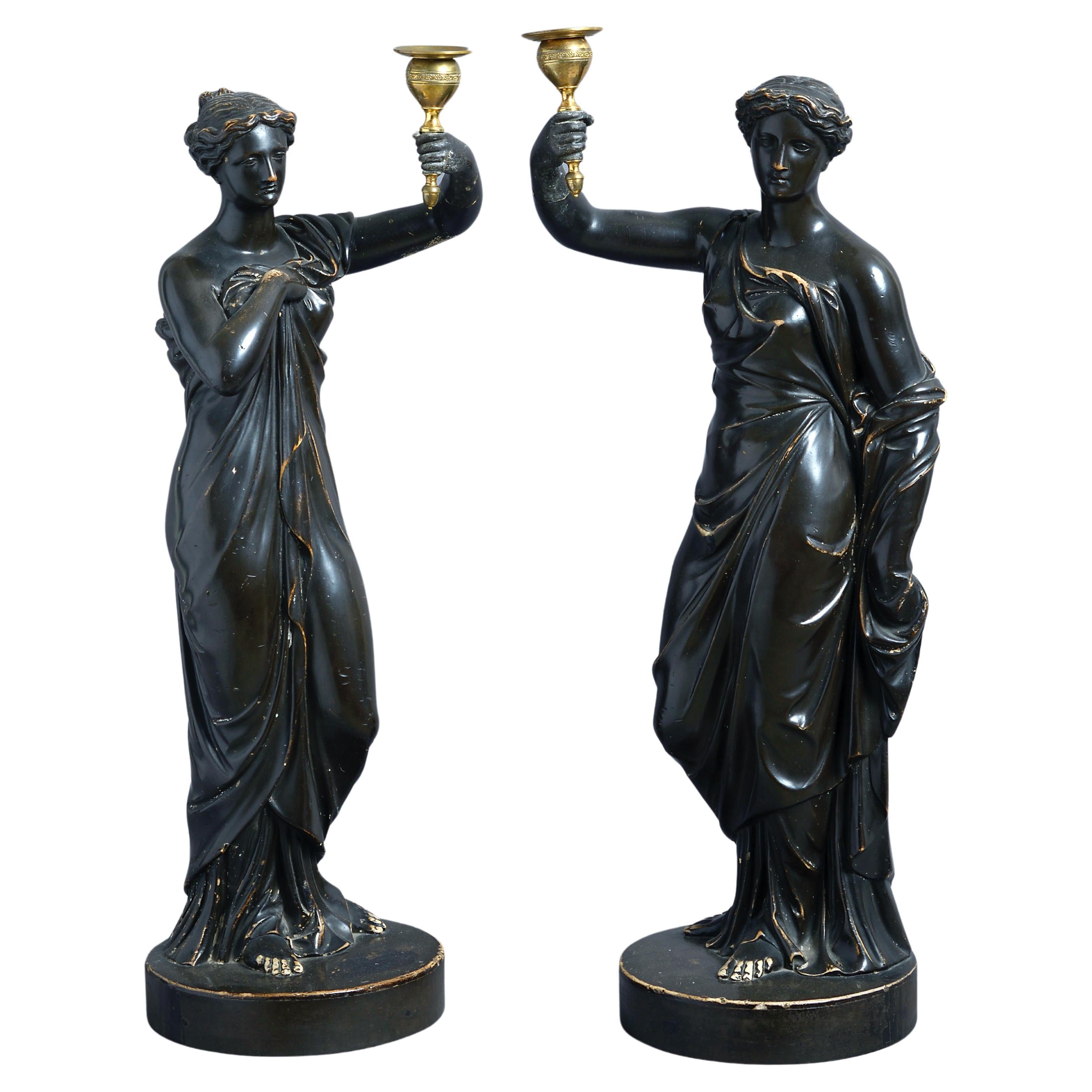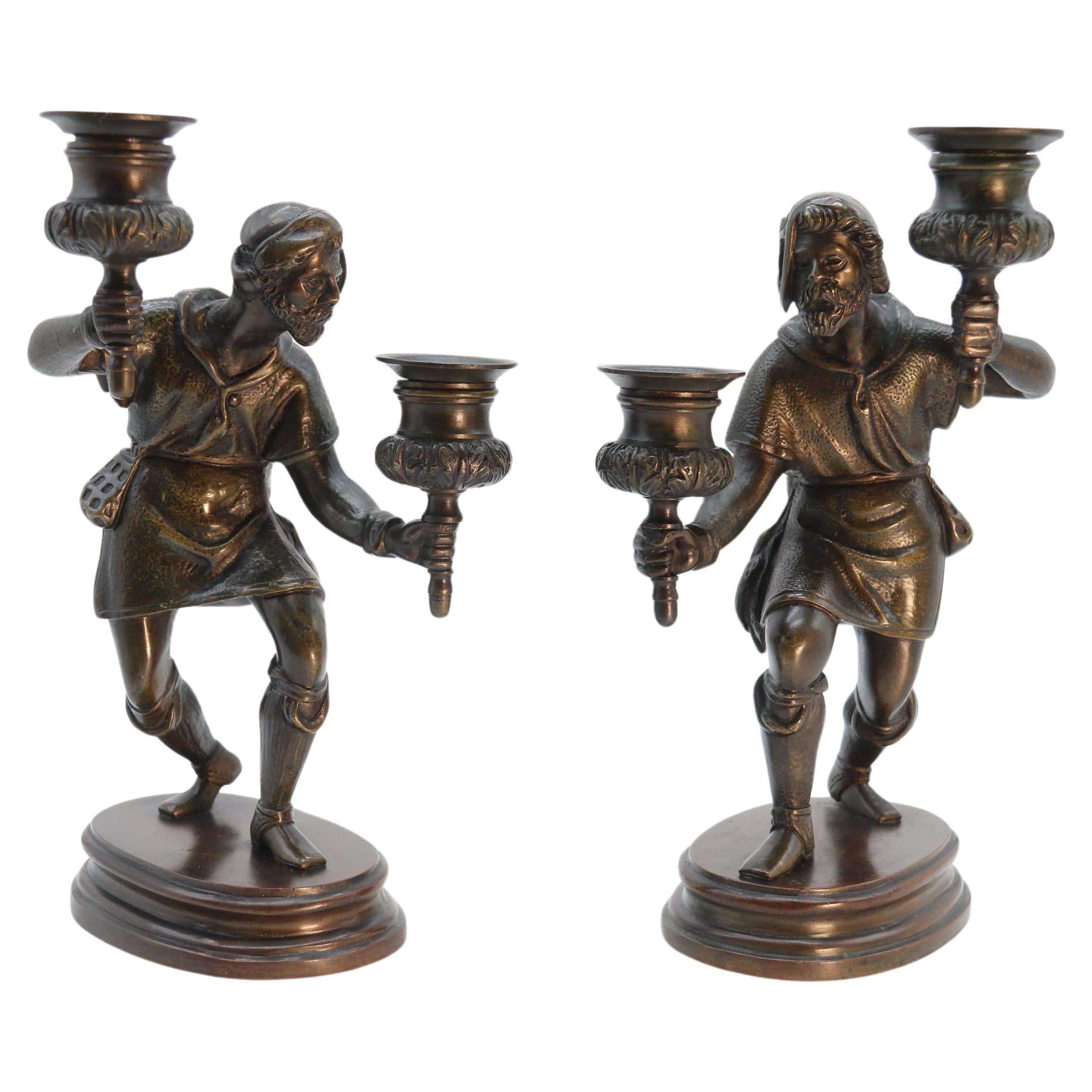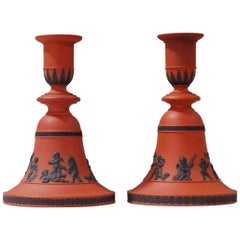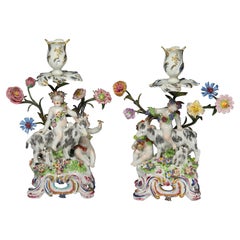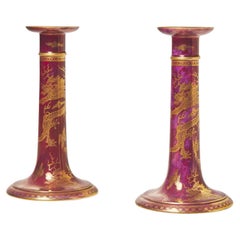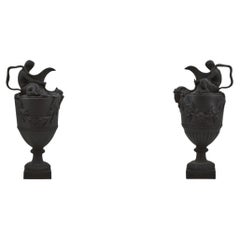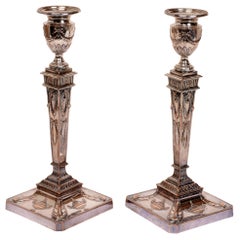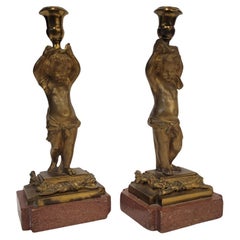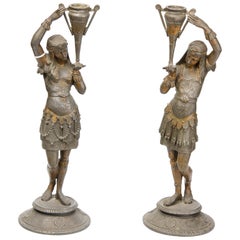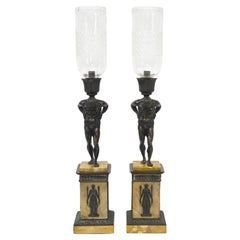Items Similar to Pair of Triton Candlesticks. Palmer C1780.
Want more images or videos?
Request additional images or videos from the seller
1 of 7
Pair of Triton Candlesticks. Palmer C1780.
$6,000
$7,50020% Off
£4,541.36
£5,676.7020% Off
€5,229.30
€6,536.6320% Off
CA$8,535.63
CA$10,669.5320% Off
A$9,246.19
A$11,557.7420% Off
CHF 4,868.50
CHF 6,085.6220% Off
MX$112,229.69
MX$140,287.1220% Off
NOK 60,716.28
NOK 75,895.3420% Off
SEK 57,405.81
SEK 71,757.2720% Off
DKK 39,038.25
DKK 48,797.8120% Off
About the Item
An exceptionally rare pair of Triton candlesticks, in black basalt with gold lustre. The design is copied from Wedgwood, who took it from Sir William Chambers' study of Bernini's Triton Fountain, in the Piazza Barbarini.
An unscrupulous dealer (not me) has had them fixed to early Wedgwood bases, in an attempt as passing them off. They are certainly by Palmer; but they do go sit well on the bases.
- Creator:Palmer (Manufacturer)
- Dimensions:Height: 10 in (25.4 cm)Width: 4 in (10.16 cm)Depth: 4 in (10.16 cm)
- Style:Neoclassical (Of the Period)
- Materials and Techniques:Stoneware,Molded
- Place of Origin:
- Period:
- Date of Manufacture:circa 1780
- Condition:Replacements made: Bases have been replaced with Wedgwood bases.
- Seller Location:Melbourne, AU
- Reference Number:Seller: 40301stDibs: LU3151331724802
About the Seller
5.0
Vetted Professional Seller
Every seller passes strict standards for authenticity and reliability
Established in 2005
1stDibs seller since 2017
80 sales on 1stDibs
Typical response time: <1 hour
- ShippingRetrieving quote...Shipping from: Melbourne, Australia
- Return Policy
Authenticity Guarantee
In the unlikely event there’s an issue with an item’s authenticity, contact us within 1 year for a full refund. DetailsMoney-Back Guarantee
If your item is not as described, is damaged in transit, or does not arrive, contact us within 7 days for a full refund. Details24-Hour Cancellation
You have a 24-hour grace period in which to reconsider your purchase, with no questions asked.Vetted Professional Sellers
Our world-class sellers must adhere to strict standards for service and quality, maintaining the integrity of our listings.Price-Match Guarantee
If you find that a seller listed the same item for a lower price elsewhere, we’ll match it.Trusted Global Delivery
Our best-in-class carrier network provides specialized shipping options worldwide, including custom delivery.More From This Seller
View AllPair of Rosso Antico Candlesticks, Wedgwood, circa 1820
By Wedgwood
Located in Melbourne, Victoria
A rare pair of bell shaped candlesticks in rosso antico, with black decoration of ‘Boys at Play’.
Category
Antique Early 19th Century English Neoclassical Pottery
Materials
Stoneware
Pair of Bocage Candlesticks, Putti and Goats. Bow 1766
By Bow Porcelain
Located in Melbourne, Victoria
A rare, possibly unique, pair of candlesticks in the form of putti, representing The Four Seasons. This is the pair pictured in Stonor’s book (#94); we’ve b...
Category
Antique Mid-18th Century English Rococo Porcelain
Materials
Porcelain
Pair of Ruby Lustre candlesticks. Wedgwood, circa 1925
By Wedgwood, Daisy Makeig-Jones
Located in Melbourne, Victoria
A pair of candlesticks, in bone china with gilt dragons to a Ruby Lustre background.
Probably the best of Wedgwood's female designers, Daisy was an eccentric character, who pushed h...
Category
Vintage 1920s English Art Deco Candlesticks
Materials
Porcelain
Pair of Flaxman Ewers in Black Basalt. Wedgwood C1830.
By Wedgwood
Located in Melbourne, Victoria
One of the iconic early wedgwood pieces, the pair of ewers Sacred to Neptune & Sacred to Bacchus was designed by Flaxman in the 1780s for Josiah Wedgwood. They have remained popular ...
Category
Antique Early 19th Century English Neoclassical Pottery
Materials
Stoneware
Near Pair of Baluster Shape Vases, Chelsea, circa 1755
By Chelsea Porcelain
Located in Melbourne, Victoria
Baluster shaped vase in soft paste porcelain with early gilt line decoration. Superb flower painting.
The shapes are very close, and the gilding is slightly more elaborate on the se...
Category
Antique Mid-18th Century English Neoclassical Porcelain
Materials
Porcelain
Large Pair of Lidded Vases in cut glass, Bohemia, circa 1790
By Bohemia Crystal
Located in Melbourne, Victoria
An outstanding pair of covered vases, or Deckelpokals, in blown glass with wheel-cur engraving. Bohemia at this time was the centre of elaborate but exceptionally fine glass cutting,...
Category
Antique Late 18th Century German Baroque Vases
Materials
Cut Glass
You May Also Like
Pair of Adam Style Neoclassical Candlesticks, 19th Century
Located in valatie, NY
A pair of Adam style neoclassical candlesticks, 19th century. With fluted tapering sides decorated with swags, rams heads, and leaf garlands topped with bows. The rectangular bases w...
Category
Antique 1850s English Adam Style Sheffield and Silverplate
Materials
Silver Plate
France Napoleon III Pair of candlesticks / lamps, putti, ormolu and marble
Located in Valladolid, ES
Stunning and delicate pair of French Napoleon III putto-shaped candlesticks or candle holders in ormolu and marble. These figures, made of mercury-gilt bronze, represent two gracefu...
Category
Antique 1880s Candlesticks
Materials
Bronze, Ormolu
Pair of Candleholders, Calamine, Possibly France, 19th Century
Located in Madrid, ES
Pair of candlesticks made in calamine that preserve polychrome remains and have circular bases on which are placed two figures dressed in Roman style according to the romantic vision...
Category
Antique 19th Century European Neoclassical More Lighting
Materials
Other
Pair of French Restoration Period Candlesticks of Patinated Bronze
Located in Dallas, TX
Pair of French restoration period candlesticks of patinated bronze and gilt bronze with figures of Atlas supporting a flower bobeche and etched glass hurricane. The bases are in sien...
Category
Antique Early 19th Century French Classical Greek Candlesticks
Materials
Marble, Bronze
Pair of Regency Bronzed Plaster Candlesticks by Humphrey Hopper
Located in London, GB
A FINE PAIR OF REGENCY BRONZED PLASTER FIGURAL CANDLESTICKS BY HUMPHREY HOPPER (1767-1844), CIRCA 1816.
Each in the form of a standing vestal bearing a...
Category
Antique 19th Century Candle Lamps
Materials
Plaster
A pair of French 19th century bronze figurative double candlesticks circa 1860
Located in Central England, GB
This highly decorative pair of mid 19th century bronze double candlesticks are beautifully cast in solid bronze. They have very good detail and are each in the form of a medieval wa...
Category
Antique Mid-19th Century French Napoleon III Candlesticks
Materials
Bronze
More Ways To Browse
18th Century Stoneware
Triton Fountain
Red Chinese Plates
Sarreguemines On Sale
Spongeware Bowl
Antique Ceramic Barrels
Antique Rose Punch Bowl
Antique Spongeware Bowl
Ceramic Cake Plate
Ceramic Insects
Cica Gomez
Crown Ducal
English Ironstone Chinoiserie
Italian Creamware
Japanese Tea Ceremony Ceramics
Lebrillos Green
Majolica Corn
Majolica Fern
